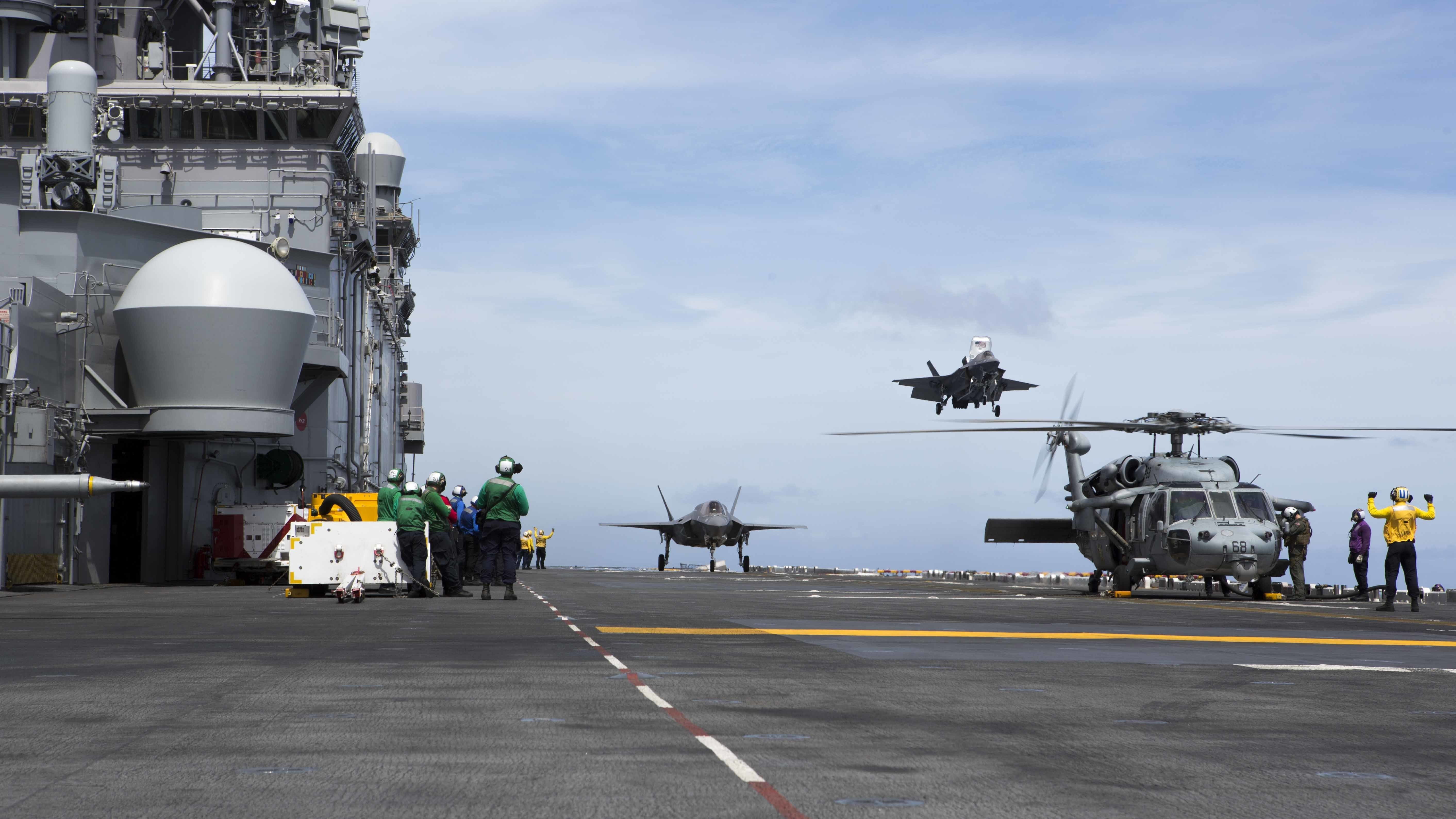The coming of the F-35B off of an amphibious task force has come to the Mediterranean. The Marines have been very visible in the Pacific as well with their new air combat capability, a capability designed to be integrated with the amphibious task force and to bring significant new multi-domain capabilities to the fleet.
In a recent article by Megan Eckstein published on USNI News on September 12, 2018, the development was highlighted.
The Marine Corps’ F-35B Lightning II Joint Strike Fighters are the only ship-based fixed-wing aircraft in the Middle East right now, and service leaders say the new jets are ready to handle any fight in Syria, Iraq or Afghanistan they may be tasked with.
Though the F-35Bs have never seen combat before, they are now the only available fighters from the Navy or Marine Corps in the region, and service leaders say they are not going to ease the F-35 into operations. Whatever 5th Fleet and U.S. Central Command leadership asks of naval aviation, the F-35Bs deployed with the Essex Amphibious Ready Group and 13th Marine Expeditionary Unit will be ready to handle, they say.
“The deployment of the F-35B into U.S. Central Command is a major milestone for the program and validates the aircraft is in the fight right now, conducting real-world operations; it is actively supporting combatant commanders.
“We look forward to demonstrating the capability of our newest, advanced stealth aircraft during this deployment,” Capt. Christopher Harrison, a spokesman at Headquarters Marine Corps at the Pentagon, told USNI News.
“The F-35Bs on the 13th MEU are able to execute any mission that may arise in U.S. Central Command while simultaneously providing a high-end deterrent to any near-peer threat that may emerge. These aircraft feature Block 3F software which provides ‘full warfighting capability’ from its fully-enabled data link to increased weapons delivery capacity.
“The F-35’s ability to operate in contested areas, including anti-access/area-denial environments that legacy fighters cannot penetrate, provides more lethality and flexibility to the combatant commander than any other fighter platform.”
USNI News previously reported the Block 3F software allows the plane to load up with more ordnance than the F/A-18C Hornet can carry through external pylons, or it can clear the wings and rely only on internal weapons carriage to preserve its fifth-generation stealth capability.
Whereas the U.S. military faced relatively uncontested air space over Afghanistan and Iraq for the better part of the last 17 years, the fight over Syria is much more complex. The Syrian government has its own jets in the air and air defense systems on the ground. Russian forces and other players complicate the air space, as the U.S. has tried to provide close-air support for U.S. and partner forces on the ground.
Lt. Christina Gibson, a spokeswoman for U.S. Naval Forces Central Command, told USNI News that, rather than ease the new F-35Bs into operations, leaders would leverage the advanced capabilities the jets bring to this complex airspace.
“The F-35B Lightning II is a significant advance in air superiority. It combines next-generation fighter characteristics of radar-evading stealth, supersonic speed, fighter agility and advanced logistical support with the most powerful and comprehensive integrated sensor package of any fighter aircraft in history, providing the [Marine Air-Ground Task Force] unparalleled lethality and survivability,” she said.
“The F-35B can provide close air support in threat environments where other current platforms would not survive, or require multiple aircraft packages. It provides unparalleled protection to our Marines and Sailors on the ground.”
Gibson added that the new plane provides more options to operational planners by being able to get into spaces that legacy F/A-18 Hornets and Super Hornets and AV-8B Harriers couldn’t, and “allows pilots and the MEU commander to do more to protect our warfighters and coalition partners on the ground.
“The F-35B allows us to approach our mission from a position of strength in the CENTCOM [area of responsibility], enabling maritime superiority that enhances stability and ensures security while providing support to operations on the ground…..”
The featured photo shows an F-35B Lightning II from Marine Fighter Attack Squadron 211, 13th Marine Expeditionary Unit (MEU), lands aboard the Wasp-class amphibious assault ship USS Essex (LHD 2), during a regularly scheduled deployment of the Essex Amphibious Ready Group (ARG) and the 13th MEU, July 24, 2018. US Marine Corps photo.


